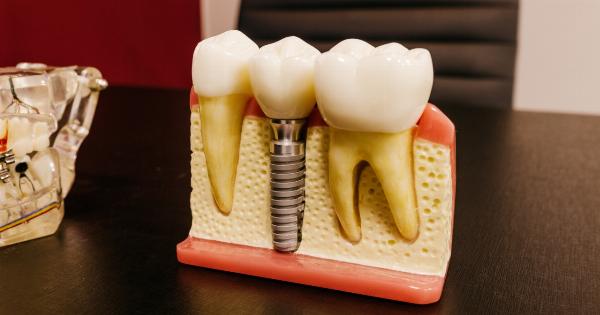Sialolithiasis is a medical condition that is more commonly known as salivary gland stones. It is a condition that affects the salivary glands, which are responsible for producing saliva to keep the mouth moist and to aid in food digestion.
When a blockage occurs in the salivary gland, usually due to the formation of a calcified stone, it can lead to a number of noticeable symptoms. In this article, we will discuss the symptoms of sialolithiasis in more detail.
What Are the Symptoms of Sialolithiasis?
There are several symptoms that can indicate the presence of sialolithiasis. These include:.
1. Swelling
One of the most noticeable symptoms of sialolithiasis is swelling in the affected area. This swelling can be uncomfortable and can make it difficult to talk, eat, or drink.
2. Pain
In addition to swelling, those with sialolithiasis may experience pain in the affected area. The pain can be mild to severe, and may come and go throughout the day.
3. Dry Mouth
When the salivary glands are not able to produce enough saliva due to a blockage, it can lead to dry mouth. This can be uncomfortable and can make it difficult to speak, swallow, or taste food.
4. Difficulty Swallowing
In some cases, sialolithiasis can lead to difficulty swallowing. This can be particularly concerning for those who have trouble breathing, as it can lead to choking or other respiratory problems.
5. Foul-Tasting or Foul-Smelling Saliva
When saliva is not able to flow properly due to a blockage, it can lead to an unpleasant taste or smell. This can be very uncomfortable and can make it difficult to eat or drink.
6. Fever
In some cases, sialolithiasis can lead to a fever. This can be a sign of infection, and should be treated promptly by a healthcare professional.
7. Redness or Discoloration
The affected area may also appear red or discolored. This can be a sign of inflammation or infection, and should be evaluated by a healthcare professional.
8. Visible Lump or Stone
In some cases, a visible lump or stone may be present in the affected area. This can be seen or felt by the patient, and may be accompanied by pain or discomfort.
9. Problems Opening the Mouth Wide
In some cases, those with sialolithiasis may experience difficulty opening their mouth wide. This can be due to swelling or pain in the affected area.
10. Headaches
Finally, those with sialolithiasis may experience headaches due to the pain and discomfort in the affected area. These headaches can range from mild to severe, and may be accompanied by other symptoms such as nausea or dizziness.
Conclusion
Sialolithiasis can be a very uncomfortable condition, but it is important to note that it is treatable.
If you are experiencing any of the symptoms mentioned above, it is important to speak with a healthcare professional as soon as possible to evaluate your condition and determine the appropriate course of treatment.



























